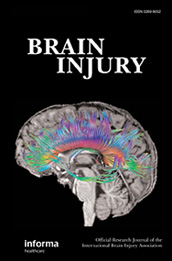
-
Bethesda, Maryland
Wednesday, August 31, 2011
The National Institutes of Health announced that it is building a central database on traumatic brain injuries. The Federal Interagency Traumatic Brain Injury Research (FITBIR) database is designed to accelerate comparative effectiveness research on brain injury treatment and diagnosis. It will serve as a central repository for new data, link to current databases and allow valid comparison of results across studies.
About 1.7 million people in the United States sustain traumatic brain injuries each year from common causes such as auto accidents and falls. In addition, American Service members serving in Iraq, Afghanistan and other parts of the world face unique risks of traumatic brain injury from routine military operations, enemy fire and improvised explosive devices. According to the DoD, in the past 12 years, more than 200,000 Service members deployed worldwide have been diagnosed with traumatic brain injury, adding to the urgent need for preventive methods and treatments. Total costs of traumatic brain injury in the United States — including medical care, lost wages and other expenses — exceed $60 billion.
Treatments remain limited despite improved surgeries and rehabilitation techniques for people with brain injuries. Cases of traumatic brain injury are highly variable, involving different causes, locations within the brain and different kinds of damage to brain tissue. Such variability makes it difficult for clinicians to treat patients, predict long-term outcomes and investigate new therapies. Also, studies often report different kinds of data on patients, obtained through various tests and measures, further impeding comparison of data across studies. The FITBIR database will address these challenges by collecting uniform and high-quality data on traumatic brain injury, including brain imaging scans and neurological test results. The data will be obtained with informed consent and stripped of any patient-identifying information.
The database is expected to aid in the development of a system to classify different types of traumatic brain injury, more targeted studies to determine which treatments are effective and for whom and under what conditions. enhanced diagnostic criteria for concussions and milder injuries, predictive markers to identify those at risk of developing conditions that have been linked to traumatic brain injury, such as Alzheimer’s disease, clearer understanding of the effects of age, sex, and other medical conditions on injury and recovery, improved evidence-based guidelines for patient care, from the time of injury through rehabilitation. Reusing the database structure is expected to save 35-50 per cent of the project costs and significantly reduce the time to achieve meaningful results.
NINDS (www.ninds.nih.gov) is the nation’s leading funder of research on the brain and nervous system. The NINDS mission is to reduce the burden of neurological disease — a burden borne by every age group, by every segment of society, by people all over the world.
Already applied and being used in leading U.S. and foreign hospitals the HandTutor and its sister components (ArmTutor, LegTutor and 3DTutor) are leading the way in treatment for traumatic brain injury victims. The Tutors improve fine motor, sensory and cognitive impairments through intensive active exercises with augmented feedback. The exercises are challenging and motivating and allow for repetitive training that is tailored to the patient’s performance. The Tutors allow the therapist to customize the most suitable rehabilitation program to the patient’s ability. The system can be used by children as well as adults and are effective in the home with telerehabilitation.
No comments:
Post a Comment